Turkish Rugs: Timeless Beauty Woven with Rich History
Turkish rugs, with their intricate designs and vibrant colors, have captivated the world for centuries. These exquisite works of art are not just floor coverings; they are cultural symbols, reflecting the rich history and heritage of Turkey. Renowned for their impeccable craftsmanship and timeless beauty, Turkish rugs continue to be cherished by collectors, interior designers, and enthusiasts around the globe. In this article, we will delve into the fascinating world of Turkish rugs, exploring their origins, weaving techniques, symbolism, and enduring popularity.
Origins and Historical Significance:
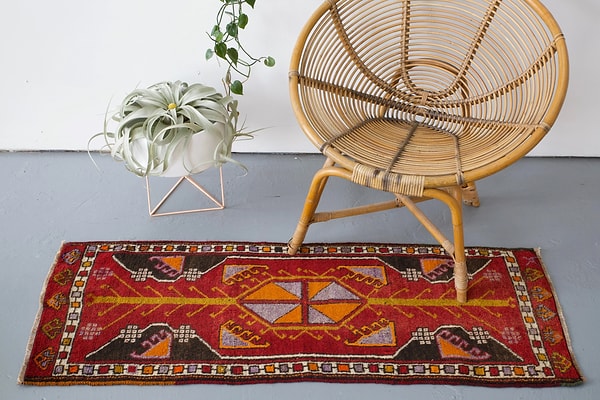
The roots of Turkish rug weaving can be traced back over 2,000 years to the nomadic tribes of Central Asia. As these tribes migrated westward, they brought with them their weaving traditions, which gradually evolved to incorporate the artistic influences of the regions they traversed. Over time, these influences fused with indigenous Anatolian techniques, resulting in the distinctive style that characterizes Turkish rugs today.
During the reign of the Seljuks and the Ottoman Empire, Turkish rugs reached their zenith. Rugs became a fundamental part of Turkish culture, adorning palaces, mosques, and homes of nobility. They were not only used for practical purposes but also served as status symbols and expressions of wealth and social standing.
Weaving Techniques and Patterns:
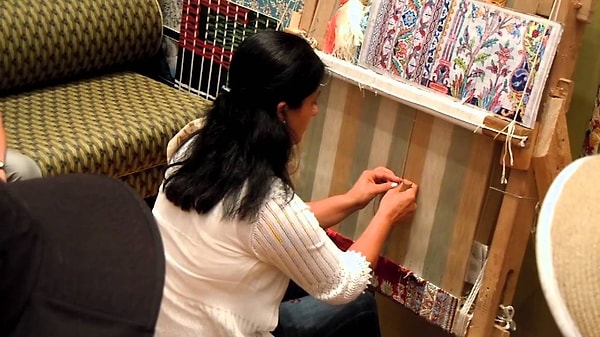
One of the distinguishing features of Turkish rugs is the weaving technique employed, known as 'double knot' or 'Gördes knot.' This method involves looping the yarn around two warp threads and then tying it off, creating a durable and tightly woven structure. The Gördes knot allows for intricate designs and enables weavers to achieve extraordinary levels of detail and precision.
Turkish rugs exhibit an astonishing array of patterns and motifs, each with its own unique symbolism. Traditional designs often incorporate geometric shapes, floral elements, or stylized medallions. The motifs may represent aspects of nature, celestial bodies, or religious symbols, reflecting the spiritual beliefs and cultural heritage of the weavers. These patterns are meticulously crafted, with each element carefully planned and executed to create a harmonious and balanced composition.
Regional Variations:
Turkey is a vast country with diverse geographic and cultural landscapes, and as such, different regions have developed their own distinct rug styles. Some of the most renowned types of Turkish rugs include:
1- Anatolian Rugs
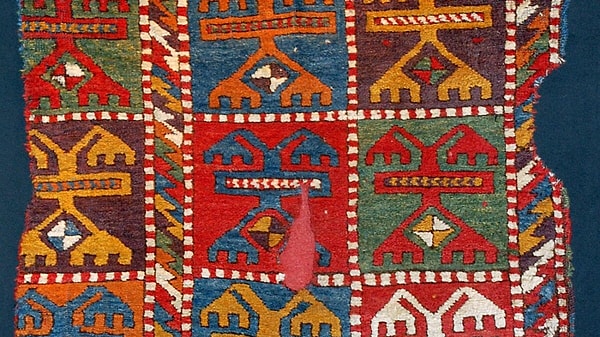
Hailing from the ancient region of Anatolia, these rugs are known for their bold, geometric patterns and vivid color palettes. They often feature a central medallion surrounded by intricate borders and are highly sought after by collectors.
2- Kilims

Kilims are flat-woven rugs characterized by their vibrant colors and intricate tapestry-like designs. They are woven without knots, resulting in a reversible rug that is equally captivating on both sides. Kilims are prized for their versatility and are used as wall hangings, floor coverings, or decorative textiles.
3- Oushak Rugs
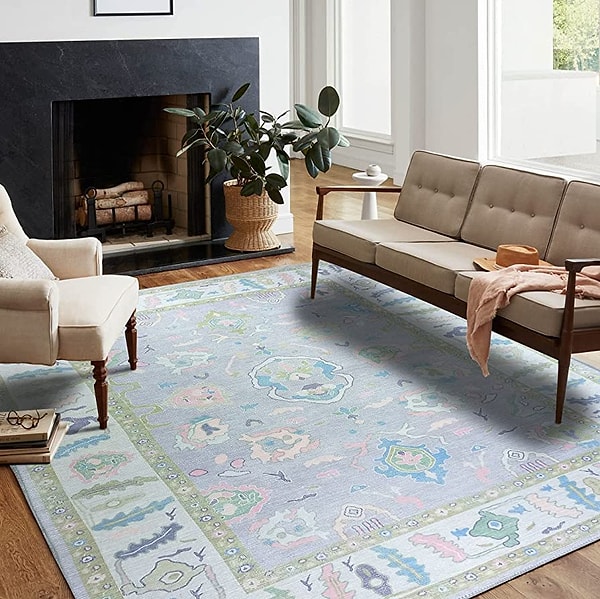
Originating from the city of Oushak, these rugs are celebrated for their soft, muted color schemes and large-scale, floral-inspired motifs. They are highly regarded for their exceptional craftsmanship and are sought after by interior designers for their ability to add elegance and warmth to any space.
4- Hereke Rugs
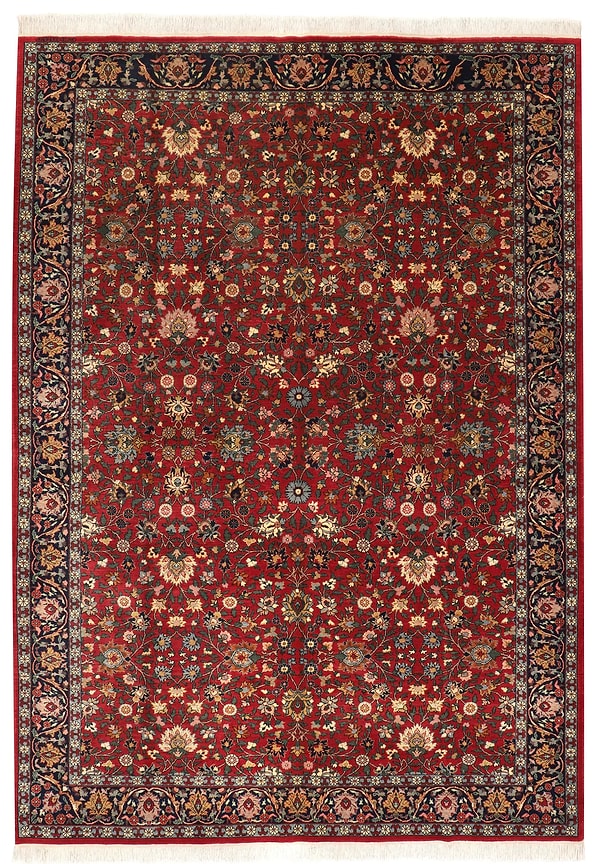
Hereke, a town near Istanbul, is renowned for producing some of the finest silk rugs in the world. These rugs exhibit extraordinary intricacy and opulence, often featuring exquisite floral patterns and delicate gold or silver threads. Hereke rugs are treasured as luxurious works of art.
Enduring Popularity and Contemporary Applications:
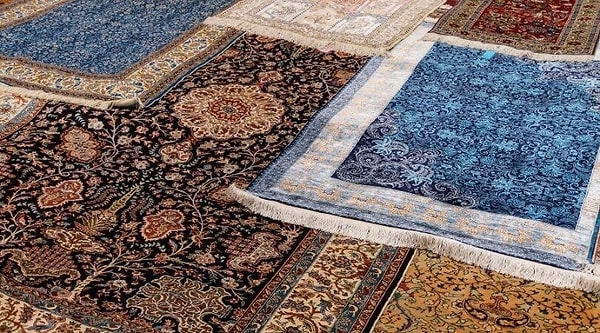
Despite their ancient origins, Turkish rugs continue to captivate people worldwide and have found a place in modern design aesthetics. Their timeless appeal, rich colors, and intricate patterns make them a popular choice for interior designers and homeowners alike, seeking to infuse their spaces with a touch of elegance and cultural heritage.
In contemporary design, Turkish rugs are celebrated for their ability to add warmth, texture, and a sense of authenticity to any room. Their versatility allows them to seamlessly complement various decor styles, from traditional to modern and everything in between. A Turkish rug can serve as the focal point of a room, anchoring the design and tying together the elements of furniture, colors, and accessories.
Beyond their decorative value, Turkish rugs also offer practical benefits.
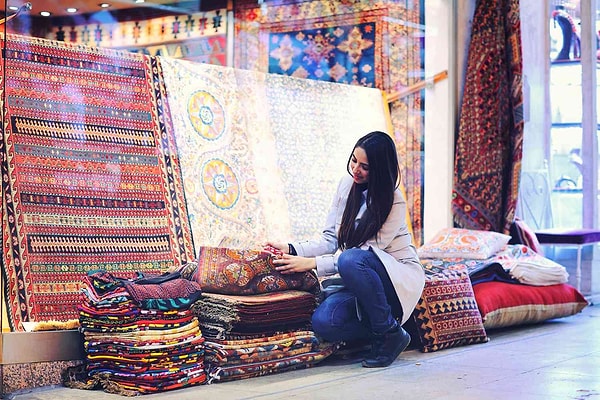
Their dense, hand-woven construction ensures durability, making them suitable for high-traffic areas. The natural fibers, often wool or silk, are known for their resilience and ability to withstand the test of time. With proper care, a Turkish rug can be passed down through generations, becoming a cherished family heirloom.
Collecting Turkish rugs has become a passion for many enthusiasts, who appreciate the artistry and craftsmanship that goes into creating these remarkable pieces. Each rug tells a story, representing the cultural heritage and creativity of its weaver. Antique Turkish rugs, especially those dating back several centuries, are highly prized and can command significant value in the market.
To ensure the authenticity and quality of a Turkish rug, it is advisable to purchase from reputable dealers or established rug galleries.
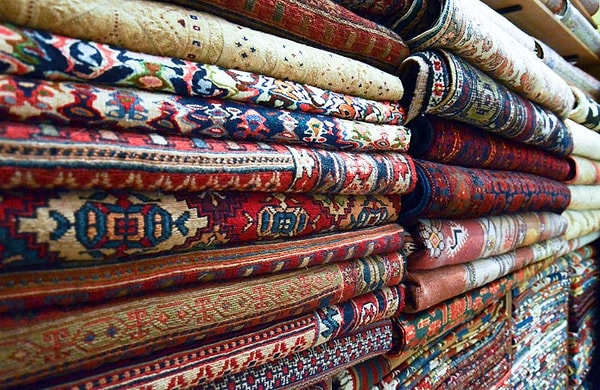
These sources often provide certificates of authenticity and valuable insights into the rug's history and origin. Additionally, exploring local markets and interacting with artisans can offer a unique opportunity to appreciate the art of rug weaving firsthand.
In recent years, there has been a growing emphasis on sustainable and ethically sourced products. Turkish rugs align with these principles, as they are typically made using natural materials and traditional production methods. Supporting local weavers and artisans not only preserves a rich cultural heritage but also promotes fair trade practices and helps sustain local communities.
Turkish rugs have transcended geographical boundaries and cultural barriers, becoming beloved and sought-after treasures worldwide.
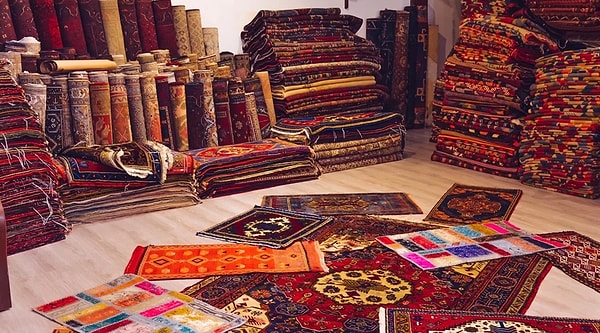
Their enduring popularity can be attributed to the combination of masterful craftsmanship, captivating designs, and the deep-rooted history they embody. Whether used as a statement piece in a luxurious setting or as a humble accent in a cozy home, Turkish rugs continue to weave a narrative of beauty and cultural significance.
In conclusion, Turkish rugs are much more than mere floor coverings. They are living works of art, representing centuries of craftsmanship and cultural heritage. With their intricate designs, vibrant colors, and exceptional weaving techniques, Turkish rugs have left an indelible mark on the world of textiles. As they continue to inspire and enchant, these timeless treasures will undoubtedly weave their way into the hearts and homes of generations to come.
Which one of these rug types do you like the most? Tell us in the comments!
Keşfet ile ziyaret ettiğin tüm kategorileri tek akışta gör!


Send Comment